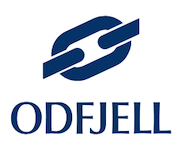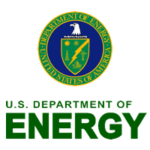Leveraging Polymer Technology: How DragX Enhances Pipeline Integrity
In the oil and gas industry, maintaining pipeline integrity is crucial for safe and efficient operations. Corrosion and flow inefficiencies can lead to significant challenges,…
We combine breakthrough science in Nanotechnology and Artificial Intelligence to produce a step change in flow assurance and corrosion protection.






DragX is a nanocomposite surface treatment for enhanced asset integrity and flow assurance that creates a durable, omniphobic, low-friction surface. The novel technology improves flow efficiency by creating an ultra-slick surface along the pipe wall and its omniphobic repelling properties combat adhesion, wax deposition, asphaltene, hydrates, and other flow restrictions.
No breakthrough technology is developed overnight. The fundamental research that produced the DragX technology goes back 20+ years to a big bet by the U.S. Department of Defense to create new nanotechnology surface treatments for military assets in the most extreme environments.
DragX has undergone extensive testing and is used in a wide range of pipeline and tubular applications transporting hydrocarbons, wastewater, water, and more. The nanocomposite surface treatment can be applied to new pipes and existing lines, in-place. DragX has demonstrated excellent flow assurance capabilities and durability in the harshest environments.
Deposition of debris such as asphaltenes, paraffin wax, hydrate formation, and scale can impede production and constrict pipelines, causing significant increases in required pumping pressure or resulting in lengthy, complex, and costly shutdowns. The formation of deposits along pipe walls can significantly increase in required pumping pressure and can lead to leaks, failures, and other costly accidents.
Corrosion, particularly Microbiologically-Induced Corrosion (MIC) can create pitting, under deposit, and galvanic corrosion in pipelines that can lead to leaks and ruptures in gas pipelines. With support from NETL, Oceanit researched DragX nanocomposite surface treatment technologies to solve to the looming MIC threat facing the U.S.’s three million+ miles of aging natural gas infrastructure.
DragX reduces pipeline pressure loss by vastly reducing surface energy and frictional forces in flow conditions along the pipe wall. The advanced nanomaterial endows pipelines’ inner surface with low surface energy, reducing pressure loss and the need for costly inhibitors or injection of flow assurance chemicals. On Heavily corroded lines, DragX can reduce pressure drop losses by a factor of two.
DragX was developed as an end-to-end system, including surface prep, application, and QC. It can be applied to new or in-service pipe, either in-factory or in-situ via Oceanit’s CorLance™ application system. Oceanit developed specialized tooling and processes for each step, including a novel pigging application process that can be used for long segments (miles), multiple diameters (up to 30”), and varying bends (90 degrees).
In the oil and gas industry, maintaining pipeline integrity is crucial for safe and efficient operations. Corrosion and flow inefficiencies can lead to significant challenges,…
Cased pipeline crossings are essential components in the oil and gas industry, facilitating the safe passage of pipelines beneath infrastructure such as roads and railways.…
Pipeline corrosion remains a significant challenge in the oil and gas industry, often leading to environmental hazards and substantial financial losses. Recent innovations, such as…
Improved pipeline efficiency, throughput, and flow assurance by reducing surface friction along the pipe wall.
Low-maintenance, chemically-resistant protection against internal pipeline corrosion, which can result in leaks.
Combats internal adhesion & deposition of unwanted debris, paraffin, black powder build-up, and other impurities.
Reduces pumping-power use and eliminates the need for costly inhibitors or chemical injection for flow assurance.
Surface Treatment Strategies for Mitigating Gas Hydrate & Asphaltene Formation, Growth, and Deposition in Flowloops.
Scale-Up and Modeling Efforts Using an Omniphobic Surface Treatment for Mitigating Solids Deposition.
Pipe Friction Loss Testing of 6-Inch Steel Pipes With and Without the Presence of DragX Surface Treatment.
Decarbonization and Improved Energy Efficiency Using a Novel Nanocomposite Surface Treatment.
Oceanit nanocomposite treatments were applied to sample pipes, demonstrating hydrophilic and hydrophobic flow behaviors. This video compares flow through an untreated pipe to both a 'water-loving' hydrophilic pipe and a 'water-repelling' hydrophobic pipe.
Oceanit's omniphobic surface treatments create water- and oil-repellency on treated surfaces. These advanced nanocomposites create a low surface energy, hydrophobic, and oleophobic layer that imparts both chemical & corrosion resistance. In addition, the functionalized surface repels fouling.
Oceanit's superhydrophobic surface treatment creates an extreme water- and ice-repelling surface that prevents corrosion. The family of anti-ice coatings showed the lowest-ever adhesion strength rating by the Air Force Cold Regions Research and Engineering Laboratory (CRREL)
Our clients often tell us we do the impossible. The question we get asked most often is, “How did you do that?!” Delivering on the impossible is always challenging, but at Oceanit, we practice a proprietary discipline that we call ‘Intellectual Anarchy.’
Intellectual Anarchy empowers us to break down traditional silos, transcend disciplines, and cross-pollinate ideas and expertise. The most difficult problems of today demand more than incremental approaches. Intellectual Anarchy produces disruptive solutions that can defy conventional wisdom and overturn existing industries, practices, and business models.
Oceanit was founded in Honolulu, Hawai’i, in 1985. Intellectual Anarchy honed our vision: to create value from innovation through engineering and scientific excellence, bringing disruptive innovation from ‘Mind to Market’.
Energy runs the world, and we’re focused on creating a sustainable future. EDGE (Energy Decarbonization for the Global Environment) is an in-house incubator that addresses next-generation energy and climate challenges with advanced materials, nanotechnologies, and more.